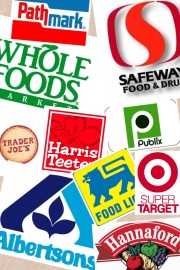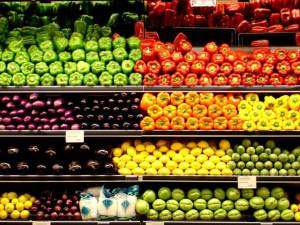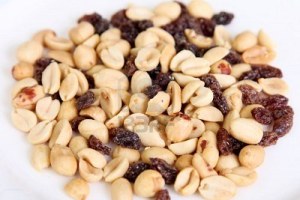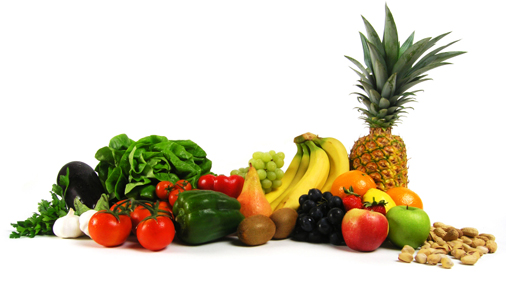Author Archives: Tiffany Nguyen
Day 1
Day 1 is finally here! That came much sooner than expected. Definitely did not have time to prepare amidst school, work, interviews, and just trying to get everything organized on paper and in my head. The results of this low-toxin high-energy diet will be unveiled on December 31, 2012. I’ll be recording and keeping track of changes on a weekly and monthly basis. I will try to gauge internal changes by checking in with a physician. I’ll also get to see if there are any major physical changes.
I have not yet had the chance to go to the grocery market, so I am starting out by cutting my intake of meats, seafood, poultry, and eggs. I am adding omega-3s to the multivitamin I am currently taking.
Breakfast: Special K cereal with fat free milk
Lunch: Strawberry goat cheese salad, mango green tea
Dinner: brown rice, 1/4 oven-cooked chicken, chopped romaine lettuce + tomatoes with vinaigrette dressing
Dessert: a small handful of Haribo gummy bears
Note to self: Remember to reach daily servings from all food groups.
Cooking & Prepping Tips for Fruits & Veggies
- Peel the skin or not? Better to buy organic and eat the skin because it has a good source of essential nutrients and fiber. If eating chemically grown, then wash those foods listed under “green” and peel “yellow”.
- Remove outer leaves of vegetables like lettuce and the top of some like celery.
- Steaming vegetables is better than boiling.
- If boiling, then use minimal amounts of water. Put vegetables into the water after bringing it to a boil, not during. You preserve the nutrients better.
- Microwaves can be used to cook vegetables and have excellent nutrient retention.
- Short cooking times preferred because leafy vegetables lose more nutrients when cooked.
- Cook vegetables whole to preserve nutrients then cut after
Steinman, David. Diet for A Poisoned Planet How to Choose Safe Foods for You and Your Family. New York: Ballantine Books, 1990. Print..
Shopping Tips for Fruits & Veggies
- Buy locally grown produce. Find your nearest farmers’ market here.
- If buying at the supermarket then buy in season. Out-of-season are more likely to be imported which can lead to loss of nutrients during the delivery process or presence of dangerous chemicals not used in the U.S.
- Wanting to eat out-of-season produce? Try frozen fruits and veggies that have not been thawed and refrozen. Check this by shaking the package to hear if they loosely clatter. If they are all stuck together then that’s a bad sign. Be careful because high freezer temperatures result in nutrient loss.
- Canned fruits and veggies have lower levels of pesticides but higher levels of lead. Sugar or salt is often added and there may be slight vitamin losses but other than that canned produce can have equal the nutrients of fresh produce.
- Opt for unprepared foods rather than precut because oxidation occurs and causes major loss in nutrients. Wait to prepare until right before you eat. If you do cut them ahead of time, squeeze lemon juice on the cut surfaces. The acidity reduces oxidation.
Where I am there are quite a few farmers’ market but they are still a drive away. Msnbc.com helped me find a closer place to shop by listing America’s 10 healthiest supermarkets. Click here to view the list.
Steinman, David. Diet for A Poisoned Planet How to Choose Safe Foods for You and Your Family. New York: Ballantine Books, 1990. Print..
Facts about Fruits & Veggies
During Steinman’s research, he found out what chemicals are applied to market produce.
Fact #1: Wax, which contain fungicides, pesticides, carcinogens, and neurotoxins, are applied on fruits and vegetables to enhance color and preserve them. Special mild detergent are developed to help remove them.
Fact #2: Federal law requires that supermarkets disclose the presence of wax on any produce at the time of purchase.
Fact #3: If wax is not present, then fungicides are.
Fact #4: Citrus crops are fumigated after harvest. Benomyl, a post-harvest pesticide, is an animal carcinogen. Another, ortho-phenylphenol, is known to depress the immune system.
Fact #5: Dried fruits and nuts are fumigated to control beetles, flies, moths, and worms. Methyl bromide, a possible carcinogen, is applied to all chemically grown nuts and dried fruits.
Fact #6: Wild European mushrooms have excess radiation as a result of the 1986 Chernobyl nuclear disaster as well as imported apple juice concentrate. Look for apple juice made from organically grown U.S. apples.
The big debate is whether organic is healthier for you or not. Dr. David Katz, an associate clinical professor of public health and medicine at Yale University, explains “In general, we know that the more fruits and vegetables people eat – organic or not – the healthier they tend to be. Thus the adverse health effects of such chemicals are more than offset by the benefits of eating produce. Put another way, not eating fruits and vegetables is more toxic than eating fruits and vegetables with some traces of pesticide.
Dr. Philip Landrigan, professor and chairman of the department of community and preventative medicine at the Mount Sinai School of Medicine in New York, stated “The evidence is strong – and validated by the National Academy of Sciences – that pesticide levels in conventionally grown foods can pose a threat to human health, especially to the health of infants and children.”
Their advice? Organic food for the younger ones is a good choice. As for adults, it’s your choice. According to Albert Einstein College of Medicine’s associate professor Keith-Thomas Ayoob, “the mountain of studies that have extolled the virtue of eating a diet high in fruits and vegetables – a lower risk of many cancers and heart disease for example – were done by looking at conventionally grown foods, not organic.”
I am striving to buy organic to avoid the chemicals, pesticides, and additives used. Plus organic farming practices contribute to reducing pollution and conserving water and soil quality. Robyn Flipse, a registered dietitian with Nutrition Communication Services, advises shoppers to be smart and ask whether certain organic products are really worth it.
Childs, Dan. “Are Organic Foods Better for You?.”abcNEWS. abc NEWS Medical Unit, 11 26 2006. Web. 18 Jan 2012. <http://abcnews.go.com/Health/story?id=2687094&page=1
Steinman, David. Diet for A Poisoned Planet How to Choose Safe Foods for You and Your Family. New York: Ballantine Books, 1990. Print.
Update: Vitamins
When I first started reading articles about taking vitamin supplements, it was really hard to figure out what I should be doing for my own health. I’ve done my best to summarize all my findings and hope that it’s not too confusing. Doctors do recommend taking a multivitamin supplement, but my concern was whether I would be overdoing it with fortified foods. Fortified foods are those that have been enriched with vitamins. If I was going to have to constantly check labels, I think I would be pulling out my hair nonstop. Luckily for me, I found an article today that helps clear up my questions.
- I should be worried if I am taking megadoses. I specified in my other post to aim for the daily value.
- Unfortified foods are definitely not a problem because it is difficult to overdo it by eating alone.
- According to Andrew Shao, Ph.D. and senior vice president of scientific and regulatory affairs for the Council for Responsible Nutrition, “most multivitamins have such a wide margin of safety that even when you’re combining them with fortified foods, it’s still not going to cause you to keel over.”
- Scientists do not know yet if going over the daily value by a little is a problem. There may be smaller symptoms associated depending on which vitamin or mineral is taken.
- Since more and more foods are being fortified, the three nutrients to watch for overdosages are calcium, vitamin D and folic acid. The daily safe upper limits are as follows: 2,000-2,500 mg of calcium, 4,000 IU of vitamin D and 1,000 mcg of folic acid.
I’ve concluded that as long as I’m not overloading on megadoses of vitamins and fortified foods I should be fine. You can view the most recent chart that shows the tolerable upper intake levels (UL) of essential vitamins and minerals here. Whew. Finally out of that jungle of a mess.
Nierenberg, Cari. “Getting Too Much of Vitamins and Minerals.” WebMD. WebMD, LLC., n.d. Web. 20 Jan 2012. <http://www.webmd.com/food-recipes/features/effects-of-taking-too-many-vitamins>.
Reade, Catherine. “The New Tolerable Upper Intake Levels.” IDEA: Health & Fitness Association. IDEA Health & Fitness Association, February 2002. Web. 20 Jan 2012.
Chapter 4: Fruit & Veggies
Formula: [organic fruits] + [organic veggies] = lower toxin count in the body
All this research is making me anxious to start trying new recipes, but a few more steps before I can dive into cooking. I know now what a balanced diet consists of and to take multivitamin supplements to reap the full benefits. It is time to figure out which foods to stay away from due to pesticides and other residues that can seep into the market produce.
According to my reading from Diet for a Poisoned Planet, Steinman has organized all the food into three categories. Green are foods that would cause up to five excess cancers in one million people and still have some pesticide residues. They are not absolutely and completely free from toxic residues so Steinman is not endorsing that these are safe to eat. He marks these as ones with the least amount of residue so it reduces the intake of toxins into the body. Yellow are foods that would cause five to ten cancers and red are foods with risk beyond ten cancers. He uses the Total Diet Study to compile all the information in his book. Hundreds of foods are tested each year for pesticides. It measures the number of residues found in sixteen samples (example: lettuce had 36 residues in 16 samples meaning each sample had an average of 2-3 pesticide residues), the different types, and the concentration.
So here is the list of what to watch out for.
Green: It’s a go! These are the safest nonorganic foods to eat.
- alfalfa sprouts
- applesauce
- asparagus
- avocados
- adzuki beans
- bananas
- bean sprouts
- beets
- black-eyed peas
- brussels sprouts
- cabbage
- carrots
- cauliflower
- chives
- corn
- cranberry juice
- dates
- figs
- fruit cocktail
- grape juice
- grapefruit
- guavas
- hazelnuts
- lemonade (frozen reconstituted)
- lemons
- lentils
- lima beans (mature)
- limes
- mixed vegetables (canned)
- mushrooms
- navy beans
- onions
- oranges
- papayas
- peaches (canned)
- pears (canned)
- peas
- pecans
- pineapple juice
- pineapples
- pinto beans
- radishes
- rapini
- red beans
- sesame seeds
- shallots
- snap green beans
- sunflower seeds
- tangerines
- tomatoes (canned)
- watercress
- watermelon & watermelon seeds
Yellow: These have a higher pesticide saturation and should be swapped for an organic substitute. According to Steinman, “all plant foods, even the most pesticide-saturated, are better for you than the worst animal foods” (p. 34).
- apple juice, apples
- apricots
- artichokes
- balckberries
- blueberries
- broccoli
- cantaloupe
- celery
- cherries
- cherry tomatoes
- chili peppers
- choysum
- collard greens
- cranberries
- crenshaw melons
- cucumbers
- eggplant
- escarole
- grapefruit juice
- grapes
- green bell peppers
- honeydew melon
- jalapeno peppers
- kale
- kiwi fruit
- leeks
- lettuce
- lima beans (immature)
- mung beans
- nectarines
- okra
- orange juice
- parsley
- parsnips
- peaches
- pears
- persimmons
- plums
- poblano peppers
- pomegranates
- potatoes
- prunes
- radishes
- raspberries
- rutabagas
- serrano chilies
- spinach
- strawberries
- string beans
- summer squash
- sweet potatoes
- swiss chard
- tomatillos
- tomatoes, tomato juice, tomato sauce
- turnip greens, turnips
- winter squash
Red: Avoid these and substitute organic varieties.
- peanuts
- raisins
This list is from the book, which used results from the Total Diet Study of 1986. I went to the Food and Drug Administration website and found updates, but quite frankly I’m not sure what to make of it. A list released by the Environmental Working Group reveals the produce most laced with pesticides from 2011. You can read through an article written by Dan Shapley of The Daily Green for the twelve foods you should buy organically and its substitutes.
Steinman, David. Diet for A Poisoned Planet How to Choose Safe Foods for You and Your Family. New York: Ballantine Books, 1990. Print.
Concluding Words for Chapters 2 & 3
Formula: vitamins + minerals(a-zinc) = prevention of cancer + stronger immune system
My sincere apologies. My fact checking needs some major working on with more time. Of course, all this information is subject to change according to more newly developed tests and discoveries. I will update if new information comes up. I mainly started this blog to increase my knowledge that will help lead to better decision making when it comes to health and I hope it is also informative to any readers who are also searching for answers. I know it’s a lot of information, but it is the only way I know to educate myself. Bear with me, after all this is out of the way I can get to the better stuff (at least the more interesting stuff for me). Anyways, I have figured out the bottom line about vitamins and minerals and whether to take supplements or not.
- Press for a well-balanced daily diet that hits all the serving requirements from the food pyramid. It is the best bet for a complete intake of the right vitamins and minerals.
- Take a multivitamin daily. According to Dr. Oz, “a study of 3 million people revealed that less than 1% of participants got enough essential vitamins from diet alone.” He also advises to take half in the morning and half at night to ensure its complete absorption.
- Check the dosages of your multivitamin. Stay within the recommendations at all times unless recommended by your physician. Important ones to consider are iron, calcium, vitamin A, E, and K.
- Take calcium and vitamin D in addition to your multivitamin. (600 mg of calcium with 400 mg of magnesium to prevent constipation and 1,000 IU vitamin D to help absorb the calcium into your body)
- Remember to consult your physician when taking vitamin supplements to see if it interacts with any medications you are currently taking.
It’s a hassle to estimate how much vitamins you’re taking because it means you need to glance at the food labels and watch for fortified foods. Most of the vitamins that your body does not use or need will be flushed out.
I use to pass by The Vitamin Shoppe and think to myself how could you possibly have a whole store of just vitamins. Now, I know and it will be my turn to run to the shop for my daily dose.
Chapter 2: Yes or No to Vitamin Supplements?
Formula: balanced diet + needed vitamin supplements (different for each person according to his/her diet) = healthy and functioning body
Vitamins are micronutrients needed to sustain life. Humans get vitamins from the foods they eat because the body does not produce them naturally, not at all, or not enough of them. First you’re told you should take vitamin supplements then you’re told you may be taking too many vitamins that it becomes bad for your body. The question ultimately comes down to: do you really need it? I began looking into why vitamin supplements would be bad for you because I heard about it through National Public Radio. I did additional research and here is what I found.
The Harvard School of Public Health explains that following a diet such as the suggested servings of the food pyramid is better than taking vitamins alone. If one does not adhere to a balanced diet, then a multivitamin is recommended. The supplement is taken to complete a balanced diet and give the body the nutrients it needs. The problem comes from taking vitamin supplements without knowing the correct amount to intake.
My mistake was thinking that all vitamin supplements were made the same and giving me the quantities I needed. Dr. Oz explains that vitamin pills provide “pharmaceutical” doses. The doses are higher than what you could get from eating food, meaning one would have to eat a bushel of produce to get the equivalent amount in a vitamin supplement.
I read “Dr. Oz Shares Multi-Vitamin Safety Recommendations” by Timothy Boyer and summarized Dr. Oz’s concern about multivitamins. Problems are found with overdoses of vitamins A and E, calcium, and iron.
- Too much vitamin A has adverse effects such as damaging blood cells, headaches, skin and bone disorders, renal failures, and birth defects in their offspring (Steinman, p. 19). It is recommended to look for labels on multivitamin bottles that say 3,500 IU (injection units) of vitamin A.
- Intaking higher doses of vitamin E is mainly a problem for men because it can increase the development of prostate cancer. Dr. Oz keeps the dose at 30 IU.
- He also says that iron should only be taken by women of childbearing age at 18 milligrams. Excess iron can harden the arteries.
- Calcium has the tendency to bind to other vitamins and prevent their absorption in the body. The recommended dosage in your multivitamin should be no more than 200 milligrams.
One step closer to being on the right track. To check out Dr. Oz’s Ultimate Supplement Checklist, click here. Additional questions and answers on vitamin supplements can be found here.
Steinman, David. Diet for A Poisoned Planet How to Choose Safe Foods for You and Your Family. New York: Ballantine Books, 1990. Print.
Chapter 1: Back to the Basics
Formula: adequate servings of [bread, cereal, rice, pasta] + [veggies] + [fruit] + [milk, yogurt, cheese] + [meat, poultry, fish, dry beans, eggs, nuts] = a strong healthy foundation
I’m going to start with the food pyramid. It’s the chart every little kid was taught in grade school. I remember coloring in my pyramid and making it as pretty as can be. Now that I think about it, that might have been more important to me than actually learning about eating right. Hey, what can I say? I was seven years old.
The original USDA food guide pyramid gives the general servings that is recommended, but it does not take into consideration age and gender. According to the break down provided by the U.S. Department of Agriculture, I fall under the category of active women with a 2,200 calorie diet. This means I would need:
- 9 servings of grains
- 4 servings of vegetables
- 3 servings of fruits
- 2 servings of milk/dairy
- 2 servings of meats/beans (total of 6 oz.)
To meet this requirement, I found information on what counts as a serving.
Grains Group (Bread, cereal, rice, and pasta)
- 1 slice of bread
- About 1 cup of ready-to-eat cereal (this means no preparation needed, for example Special K)
- 1/2 cup of cooked cereal, rice, or pasta
Vegetable Group
- 1 cup of raw leafy vegetables (examples: bok choy, romaine lettuce, arugula, spinach, and watercress)
- 1/2 cup of other vegetables cooked or raw
- 3/4 cup of vegetable juice
Fruit Group
- 1 medium sized apple, orange, banana, or pear
- 1/2 cup of chopped, cooked, or canned fruit
- 3/4 cup of fruit juice
Milk Group (Milk, yogurt, and cheese)
This category includes lactose-free and lactose-reduced products. Fat-free, low-fat, or reduced-fat dairy products preferred.
- 1 cup of milk or yogurt
- 1 1/2 oz. of natural cheese (Cheddar)
- 2 oz. of processed cheese (American)
Meat and Beans Group (Meat, poultry, dry beans, eggs, and nuts)
*Dry beans can be counted in the vegetable group. 1/2 cup of cooked dry beans counts as 1 serving.
- 2-3 oz. of cooked lean meat, poultry, or fish
- 1/2 cup of cooked dry beans or 1/2 cup of tofu counts as 1 ounce of lean meat
- 2 1/2-ounce soyburger or 1 egg counts as 1 ounce of lean meat
- 2 tablespoons of peanut butter or 1/3 cup of nuts counts as 1 ounce of lean meat
Not too difficult. These are the recommendations for a balanced diet. I realize that going overboard on one type of food group tips the scale and may make me miss out on the valuable properties of other foods. Maintaining these servings will also help me maintain my weight. So it’s true when people say eat everything in moderation, but make sure you get your daily servings in.
All information was provided by the Office of Disease Prevention and Health Promotion, the Office of the Assistant Secretary for Health, Office of the Secretary, and the U.S. Department of Health and Human Services through their coordinated website. Additional information about dietary guidelines for children and men can be found here.








